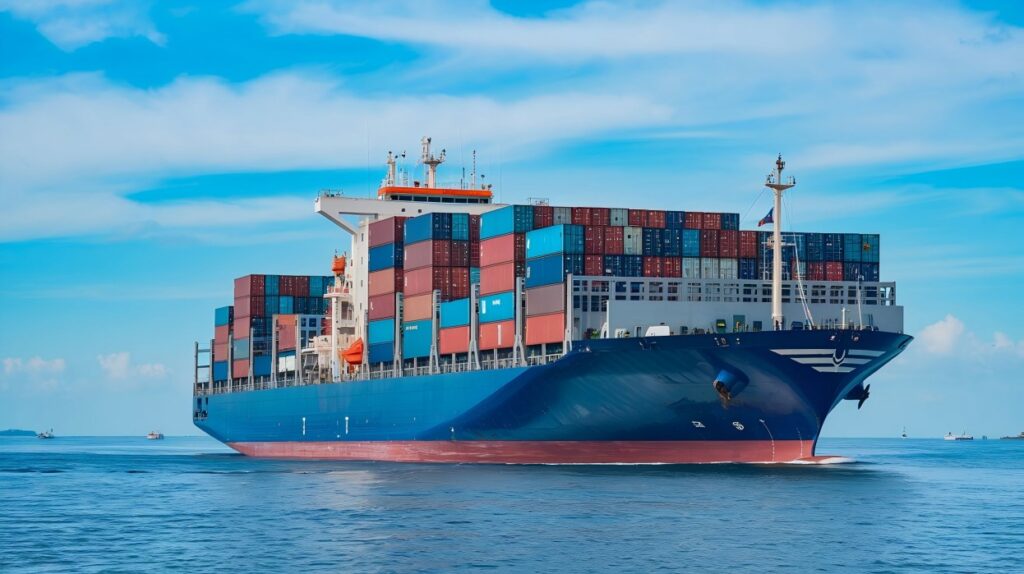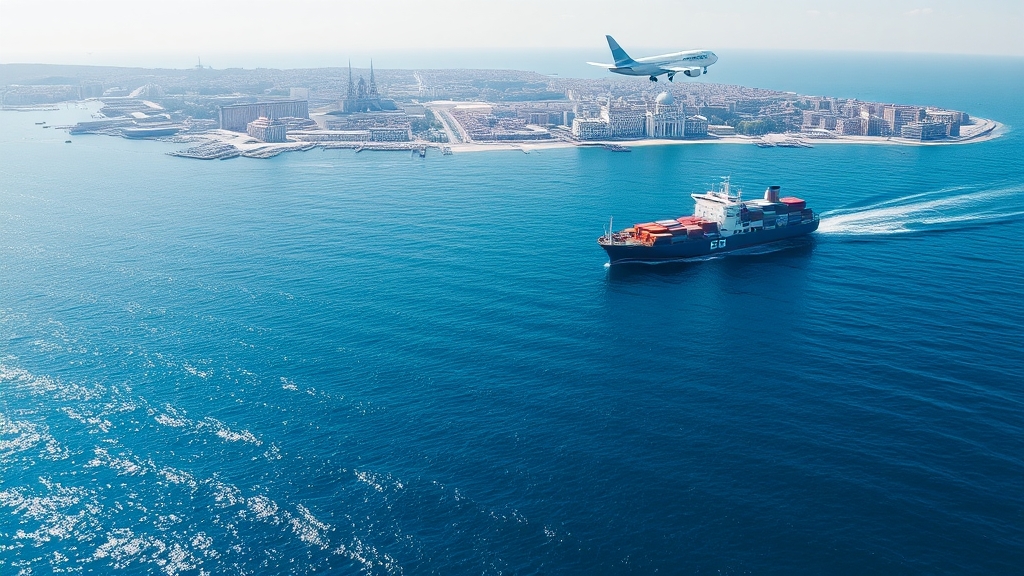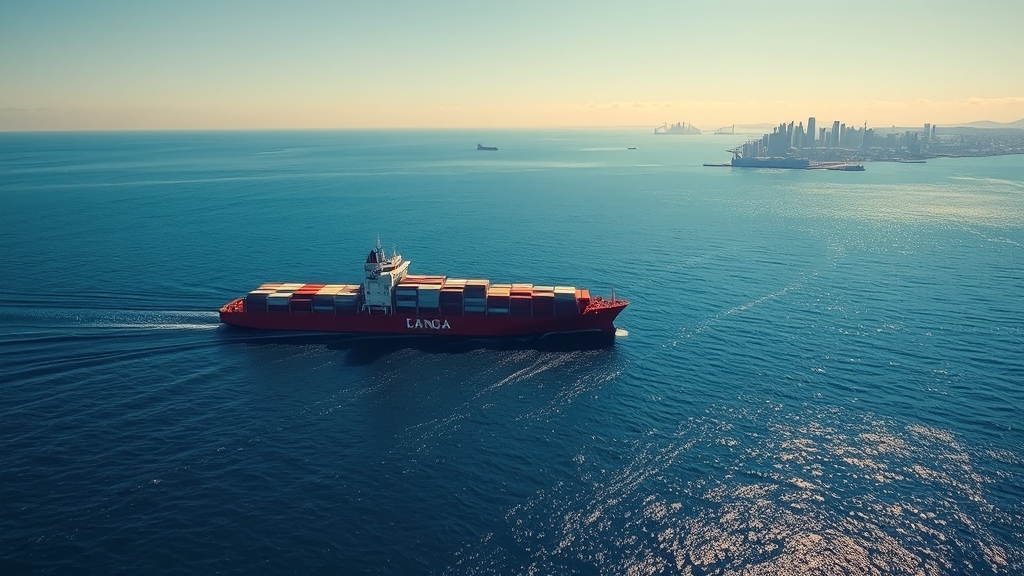Navigating the logistics of importing goods can be a complex endeavor, especially when shipping from China to Guatemala. Sea freight emerges as a popular choice for businesses due to its cost-effectiveness and ability to transport large volumes of cargo. Understanding the intricacies of the sea freight process, from selecting the right shipping method to managing customs clearance and delivery timelines, is crucial for success. In this comprehensive guide, we will walk you through the essential steps and considerations for shipping goods via sea freight, ensuring you are well-equipped to make informed decisions and streamline your international trade operations.

Understanding Sea Freight
Sea freight refers to the process of transporting goods via ships across oceans and seas. This method of transportation is particularly popular for international trade due to its cost-effectiveness and capacity to handle large volumes of cargo. Goods are typically loaded into containers, which are then shipped to various ports around the world.
Why Choose Sea Freight?
- Cost Efficiency: One of the most significant advantages of sea freight is the lower cost per unit compared to air freight. As a result, businesses can save substantial amounts on shipping expenses.
- Large Capacity: Sea freight allows for the transportation of bulky items up to 20-40 tons in a single shipping container, making it ideal for importing goods in large quantities.
- Environmental Impact: Shipping by sea is more environmentally friendly compared to air transportation, producing lower carbon emissions per ton-mile.
- Diverse Cargo Options: Sea freight accommodates a diverse range of goods, including raw materials, consumer products, and machinery, making it a versatile choice for various industries.
Benefits of Sea Freight for Importing Goods
1. Cost Savings
The overall reduction in shipping costs is a primary reason why many businesses choose sea freight for importing goods. The cost-per-ton is significantly lower than air freight, which is especially advantageous for businesses importing products with tight profit margins.
2. Flexibility in Cargo Types
Sea freight can handle a wide array of cargo types, including bulk goods, hazardous materials, and oversized shipments. This flexibility allows businesses to import different types of products without needing to switch carriers.
3. Reduced Handling
With fewer transfers between transport modes, sea freight often results in less handling of goods, minimizing the risk of damage during transit.
4. Schedule Reliability
While sea freight may take longer than air transportation, it usually operates on a set schedule. Businesses can reliably plan their inventory and shipping timelines, ensuring that goods arrive when needed.
5. Access to a Global Market
Utilizing sea freight enables businesses to tap into global markets with ease. With various shipping routes available, companies can efficiently import goods from manufacturers, particularly in manufacturing hubs like China.
Key Considerations for Shipping from China to Guatemala
When shipping goods from China to Guatemala, businesses must consider several key aspects to ensure a smooth and efficient shipping process.
Shipping Methods
- Full Container Load (FCL): This method is ideal for businesses that have enough goods to fill an entire container. FCL offers cost savings and lower risks of damage.
- Less than Container Load (LCL): For smaller shipments, LCL combines multiple customers’ goods into a single container. Although more expensive than FCL on a per-unit basis, it allows businesses to import smaller quantities.
Shipping Routes
The most common shipping route from China to Guatemala typically involves the following ports:
- Departure Port: Ports such as Shenzhen, Shanghai, or Ningbo are major departure points in China.
- Arrival Port: The primary port in Guatemala is Puerto Quetzal, which serves as the main gateway for international shipping.
Required Documents
To facilitate a successful shipping process, the following documents are typically required:
- Bill of Lading (B/L): This document serves as a receipt of cargo and outlines the terms of transportation.
- Commercial Invoice: A comprehensive invoice detailing the goods being shipped, their value, and terms of sale.
- Packing List: A document that itemizes the cargo included in the shipment, along with details on packing and weight.
- Customs Declaration: Necessary for customs clearance, this document outlines the contents of the shipment for tax purposes.
Customs Clearance
Navigating customs is a critical step in the shipping process. Businesses must ensure that all documentation is accurate and complete to prevent delays. Key aspects to consider include:
- Tariffs and Duties: Understanding the applicable tariffs and ensuring timely payment is essential to avoid complications during customs clearance.
- Compliance with regulations: Adhering to both Chinese and Guatemalan import/export regulations is crucial to prevent legal issues or delays.
- Utilizing a Freight Forwarder: Engaging services from a reputable freight forwarder, such as Dantful International Logistics, can streamline the customs clearance process. Expert freight forwarders facilitate documentation preparation, ensuring compliance with regulations and offering additional support through customs clearance services.
By leveraging Dantful International Logistics, you can benefit from a highly professional and cost-effective approach to your international shipping needs, including door-to-door shipping services. With extensive experience in shipping from China to Guatemala and around the globe, Dantful ensures your goods arrive safely and efficiently, allowing you to focus on your business growth. For assistance with your shipping needs, explore Dantful’s comprehensive logistics services today.
READ MORE:
- Shipping From China to the United States
- Shipping From China TO Canada
- Shipping From China TO Mexico
- Shipping From China to Panama
- Shipping From China to Costa Rica
- Shipping From China to Brazil
- Shipping From China TO Colombia
- Shipping From China to Jamaica
- Shipping From China to Venezuela
Major Ports for Sea Freight
Top Chinese Ports for Exporting to Guatemala
When exporting goods from China to Guatemala, several key ports facilitate the shipping process. These ports are strategically located and equipped to handle a high volume of cargo, ensuring efficient and timely transportation.
| Port Name | Location | Key Features |
|---|---|---|
| Port of Shanghai | Shanghai | One of the busiest ports in the world, equipped with advanced cargo handling facilities. Ideal for large shipments. |
| Port of Shenzhen | Shenzhen | A major manufacturing hub with a vast shipping network, ensuring quick access to international markets. |
| Port of Ningbo | Ningbo | Known for its high container throughput and efficient logistics, making it suitable for various cargo types. |
| Port of Guangzhou | Guangzhou | A vital port in southern China, known for its accessibility and efficient customs clearance processes. |
| Port of Tianjin | Tianjin | Serves northern China and supports extensive shipping routes, facilitating the export of goods efficiently. |
These ports are equipped to handle various types of cargo, ensuring that businesses can export goods to Guatemala effectively.
Key Guatemala Ports for Imports
Guatemala has several significant ports that play a crucial role in receiving goods imported from China. The efficiency and capacity of these ports are vital for international trade.
| Port Name | Location | Key Features |
|---|---|---|
| Puerto Quetzal | Escuintla | The primary seaport in Guatemala, handling a majority of the country’s international trade. Equipped for container and bulk cargo. |
| Puerto Santo Tomás | Retalhuleu | A smaller port that handles various types of cargo, serving as an alternative for specific shipping needs. |
| Puerto Barrios | Izabal | Focused on servicing the Atlantic coast, facilitating trade with Caribbean and Central American markets. |
| Puerto de San José | San José | A significant port for local trade and smaller shipments, known for its accessibility. |
These ports are essential for efficiently processing cargo arriving from international destinations, including China.
The Sea Freight Shipping Process Step-by-Step
Understanding the sea freight shipping process is crucial for businesses looking to import goods from China to Guatemala. Each step involves careful planning and coordination to ensure timely delivery.
1. Obtaining a Freight Quote and Booking
- Providing Shipment Details to the Freight Forwarder: Submit key information such as cargo dimensions, weight, type of goods, and desired shipping timeframe to the freight forwarder.
- Agreeing on Shipping Terms and Rates: Negotiate shipping terms, including delivery timelines, payment options, and any additional services required.
- Confirming the Booking: Finalize the booking by signing necessary contracts and confirming the agreed-upon rates and terms.
2. Cargo Pick-Up and Delivery to the Port
- Arranging for Cargo Pick-Up from the Supplier: Coordinate with the supplier to arrange the timely collection of goods.
- Transporting the Goods to the Port of Departure in China: Ensure that the cargo is safely transported to the designated port, ready for shipping.
3. Export Customs Clearance in China
- Submitting Required Documents: Prepare and submit necessary documentation, including the bill of lading, commercial invoice, and packing list.
- Paying Export Duties and Taxes: Ensure all applicable export duties and taxes are paid to facilitate smooth clearance through customs.
4. Loading and Ocean Transportation
- Loading the Cargo onto the Vessel: Supervise the loading process to confirm that the cargo is secured and properly documented.
- Transit Time from China to Guatemala: Depending on shipping routes and weather conditions, the typical transit time can range from 20 to 40 days.
5. Import Customs Clearance in Guatemala
- Submitting Import Documents: Once the cargo arrives, prepare and submit import documentation to Guatemalan customs authorities.
- Paying Import Duties and Taxes: Ensure timely payment of any applicable import tariffs and taxes to avoid delays.
6. Cargo Unloading and Delivery to the Final Destination
- Unloading the Cargo at the Port of Arrival in Guatemala: Oversee the unloading process to ensure that all goods are accounted for and undamaged.
- Arranging for Final Delivery to Your Warehouse or Facility: Coordinate transportation from the port to your final destination, ensuring that goods reach your facility promptly.
By considering these steps and utilizing the services of experienced freight forwarders like Dantful International Logistics, you can streamline the shipping process from China to Guatemala. Dantful offers a highly professional, cost-effective, and high-quality one-stop international logistics service, ensuring your cargo is handled with care and efficiency.
Shipping Costs from China to Guatemala by Sea Freight
When considering the importation of goods from China to Guatemala via sea freight, understanding the associated costs is essential for effective budgeting and planning. Various factors contribute to the overall shipping costs, and knowing how to manage these can result in significant savings for businesses.
Breakdown of Sea Freight Costs
The total cost of shipping goods from China to Guatemala can be broken down into several components:
| Cost Component | Description |
|---|---|
| Freight Charges | The base cost charged by the shipping line for transporting goods. This varies by shipping method (FCL or LCL). |
| Fuel Surcharges | Additional charges that fluctuate based on fuel prices, affecting the overall cost of sea transport. |
| Terminal Handling Charges | Fees for loading and unloading cargo at the shipping and receiving ports. These may include storage and handling. |
| Customs Duties and Taxes | Import tariffs and taxes applied by Guatemalan customs based on the value of the goods. |
| Documentation Fees | Costs associated with preparing necessary shipping documents, such as bills of lading and invoices. |
| Insurance Costs | Optional fees for insuring cargo against damage or loss during transit. It is advisable to consider insurance services to mitigate risks. |
| Delivery Charges | Costs for transporting goods from the port to the final destination in Guatemala. |
By understanding each component of these costs, businesses can better manage their budgets and make informed decisions regarding their shipment methods.
Tips for Reducing Shipping Expenses
-
Consolidate Shipments: If possible, combine orders from multiple suppliers to fill a full container load (FCL). This method significantly reduces the cost per unit compared to less than container load (LCL) shipments.
-
Negotiate Freight Rates: Work with freight forwarders to negotiate better shipping rates. Establishing long-term relationships can lead to discounts and preferential rates.
-
Optimize Packaging: Ensure that packaging is efficient and minimizes wasted space. This will allow more goods to fit within a container, potentially reducing the total number of containers needed.
-
Choose Reliable Providers: Partnering with reputable freight forwarders, such as Dantful International Logistics, ensures that you receive competitive rates and transparent service, which may minimize unexpected costs.
-
Stay Informed on Market Trends: Keep an eye on fuel prices and market trends that could impact shipping costs. Being proactive can allow businesses to act when rates are more favorable.
Shipping Times from China to Guatemala by Sea Freight
Shipping times can significantly influence inventory management and business operations. Understanding typical delivery timelines for both port-to-port and door-to-door shipping can aid in planning.
Port-to-Port Delivery
Typical Transit Times for Major Port Pairs
| Departure Port | Arrival Port | Typical Transit Time |
|---|---|---|
| Shanghai | Puerto Quetzal | 25-30 days |
| Shenzhen | Puerto Quetzal | 22-28 days |
| Ningbo | Puerto Quetzal | 24-31 days |
| Guangzhou | Puerto Quetzal | 26-33 days |
| Tianjin | Puerto Quetzal | 27-34 days |
These transit times can vary based on shipping schedules, weather conditions, and port congestion. Therefore, businesses should account for potential delays when planning.
Factors Affecting Port-to-Port Delivery Times
- Weather Conditions: Adverse weather can affect shipping schedules and cause delays in transit.
- Port Congestion: High traffic at ports can lead to longer loading and unloading times.
- Customs Clearance: Delays in customs processes can prolong the shipment timeline. Ensuring correct documentation helps mitigate these issues.
- Vessel Schedule: The frequency of shipping lines operating on specific routes influences shipping times. Fewer sailings per week can lead to longer wait times.
Door-to-Door Delivery
Door-to-door delivery encompasses the entire shipping process from the supplier’s location in China to the final destination in Guatemala. This service includes inland transportation, customs clearance, and delivery:
Typical Transit Times for Door-to-Door Delivery
- Average Time Frame: 30-45 days, depending on the distance from the port to the final destination and any logistical considerations.
Considerations for Door-to-Door Delivery
-
Service Provider Efficiency: The experience and network of the freight forwarder can significantly impact delivery times. Working with a reputable provider like Dantful ensures reliable service.
-
Inland Transportation: Efficiency in transporting goods from the port to the final destination is crucial. The availability of transportation options may affect the overall delivery timeline.
-
Customs Processing: Streamlined customs clearance processes are essential to avoid delays. Partnering with experienced professionals helps in navigating customs requirements effectively.
Leveraging the expertise and resources of Dantful International Logistics can facilitate a seamless shipping experience from China to Guatemala. By understanding shipping costs and timelines and implementing strategies to manage expenses, businesses can optimize their supply chains and enhance operational efficiency. Explore Dantful’s comprehensive logistics services to enhance your international shipping strategy today.
Dantful International Logistics Services:
- Dantful Ocean Freight Services
- Air Freight From China
- Amazon FBA Freight Forwarding
- WAREHOUSE Services
- One-Stop Customs Clearance Solution
- Cargo Insurance Services in China
- DDP Shipping Services By Dantful Logistics
- Out of Gauge Cargo Transportation Shipping Services
FAQs
1. What is sea freight and why should I choose it for shipping goods from China?
Sea freight is the transportation of goods via ships across oceans and seas. It is a cost-effective option for international trade, particularly for large volumes of cargo. Businesses choose sea freight for its lower cost per unit, large capacity, reduced environmental impact, and versatility in handling diverse cargo types.
2. What are the main shipping methods available for transporting goods from China to Guatemala?
The primary shipping methods are:
- Full Container Load (FCL): Ideal for large shipments that can fill an entire container, offering cost savings and lower risks of damage.
- Less than Container Load (LCL): Suitable for smaller shipments, combining multiple customers’ goods in one container, though at a higher per-unit cost.
3. What ports are used for shipping from China to Guatemala?
Key ports for shipping from China include:
- Port of Shanghai
- Port of Shenzhen
- Port of Ningbo
These ports are major hubs for exporting goods. In Guatemala, the primary port for receiving shipments is Puerto Quetzal.
4. What documentation is required for shipping goods from China to Guatemala?
Essential documents include:
- Bill of Lading (B/L)
- Commercial Invoice
- Packing List
- Customs Declaration
These documents facilitate the shipping and customs clearance process.
5. How can customs clearance affect my shipment?
Customs clearance is critical for timely delivery. Ensuring all documentation is accurate and complete is essential to avoid delays. Businesses should be aware of tariffs and compliance regulations in both China and Guatemala.
6. What costs should I expect when shipping goods via sea freight?
Shipping costs from China to Guatemala typically include:
- Freight Charges
- Fuel Surcharges
- Terminal Handling Charges
- Customs Duties and Taxes
- Documentation Fees
- Insurance Costs
- Delivery Charges
7. How can I reduce shipping expenses when importing goods?
To manage and reduce shipping expenses, consider:
- Consolidating shipments to fill FCL.
- Negotiating rates with freight forwarders.
- Optimizing packaging for efficiency.
- Partnering with reputable freight forwarders like Dantful International Logistics for competitive rates.
8. What are the typical shipping times for sea freight from China to Guatemala?
Typical transit times for port-to-port shipping range from 20 to 40 days, depending on the departure port. The average time for door-to-door delivery can be 30 to 45 days, which includes inland transportation and customs clearance.

Young Chiu is a seasoned logistics expert with over 15 years of experience in international freight forwarding and supply chain management. As CEO of Dantful International Logistics, Young is dedicated to providing valuable insights and practical advice to businesses navigating the complexities of global shipping.





















 Afrikaans
Afrikaans Shqip
Shqip አማርኛ
አማርኛ العربية
العربية Հայերեն
Հայերեն Azərbaycan dili
Azərbaycan dili Euskara
Euskara Беларуская мова
Беларуская мова বাংলা
বাংলা Bosanski
Bosanski Български
Български Català
Català Cebuano
Cebuano Chichewa
Chichewa 简体中文
简体中文 繁體中文
繁體中文 Corsu
Corsu Hrvatski
Hrvatski Čeština
Čeština Dansk
Dansk Nederlands
Nederlands English
English Esperanto
Esperanto Eesti
Eesti Filipino
Filipino Suomi
Suomi Français
Français Galego
Galego ქართული
ქართული Deutsch
Deutsch Ελληνικά
Ελληνικά Kreyol ayisyen
Kreyol ayisyen Harshen Hausa
Harshen Hausa Ōlelo Hawaiʻi
Ōlelo Hawaiʻi עִבְרִית
עִבְרִית हिन्दी
हिन्दी Hmong
Hmong Magyar
Magyar Íslenska
Íslenska Igbo
Igbo Bahasa Indonesia
Bahasa Indonesia Gaeilge
Gaeilge Italiano
Italiano 日本語
日本語 Basa Jawa
Basa Jawa ಕನ್ನಡ
ಕನ್ನಡ Қазақ тілі
Қазақ тілі ភាសាខ្មែរ
ភាសាខ្មែរ 한국어
한국어 كوردی
كوردی Кыргызча
Кыргызча ພາສາລາວ
ພາສາລາວ Latin
Latin Latviešu valoda
Latviešu valoda Lietuvių kalba
Lietuvių kalba Lëtzebuergesch
Lëtzebuergesch Македонски јазик
Македонски јазик Malagasy
Malagasy Bahasa Melayu
Bahasa Melayu മലയാളം
മലയാളം Maltese
Maltese Te Reo Māori
Te Reo Māori मराठी
मराठी Монгол
Монгол ဗမာစာ
ဗမာစာ नेपाली
नेपाली Norsk bokmål
Norsk bokmål پښتو
پښتو فارسی
فارسی Polski
Polski Português
Português ਪੰਜਾਬੀ
ਪੰਜਾਬੀ Română
Română Русский
Русский Samoan
Samoan Gàidhlig
Gàidhlig Српски језик
Српски језик Sesotho
Sesotho Shona
Shona سنڌي
سنڌي සිංහල
සිංහල Slovenčina
Slovenčina Slovenščina
Slovenščina Afsoomaali
Afsoomaali Español
Español Basa Sunda
Basa Sunda Kiswahili
Kiswahili Svenska
Svenska Тоҷикӣ
Тоҷикӣ தமிழ்
தமிழ் తెలుగు
తెలుగు ไทย
ไทย Türkçe
Türkçe Українська
Українська اردو
اردو O‘zbekcha
O‘zbekcha Tiếng Việt
Tiếng Việt Cymraeg
Cymraeg יידיש
יידיש Yorùbá
Yorùbá Zulu
Zulu